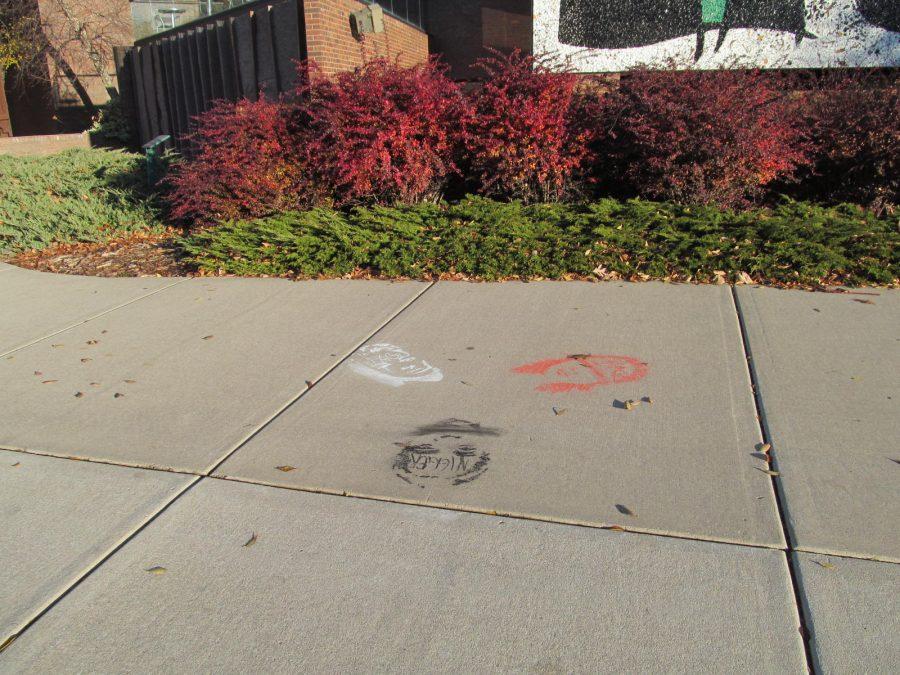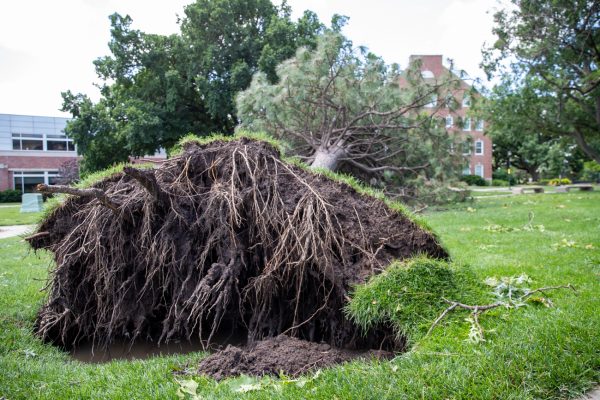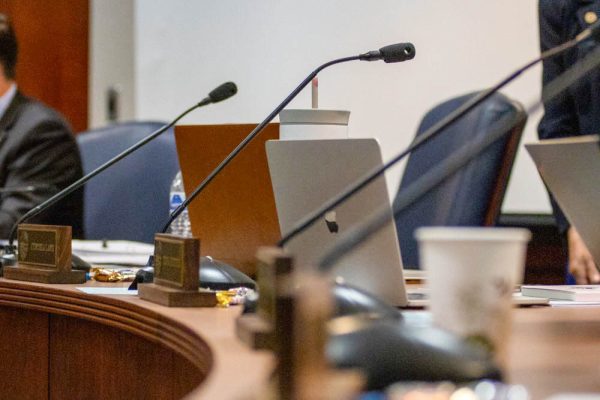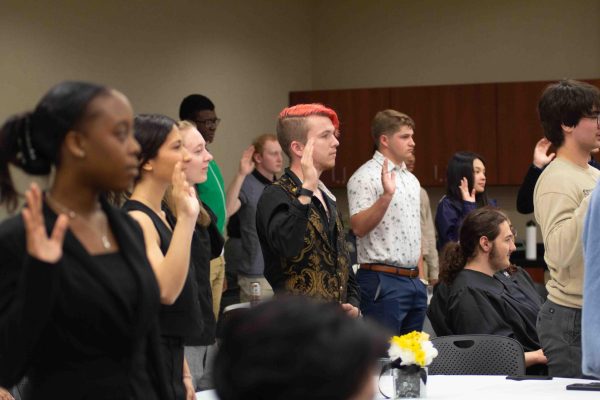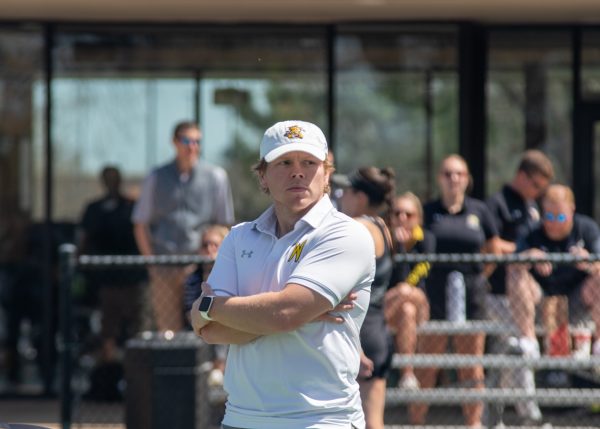University responds to sidewalk chalk drawings, racial slurs
Students arriving on campus Monday morning were greeted by a series of drawings in chalk outside of four prominent buildings on campus – the Ulrich Museum of Art, Ablah Library, the Rhatigan Student Center, and near the bust of Martin Luther King Jr. outside of Lindquist Hall.
The same illustration appeared in all four locations – a collection of three faces in red, white and black chalk with the eyes, ears and mouth crossed out, respectively.
Each face had a different racial or gender identity-related slur written across the forehead.
The chalk drawings appeared between 11 p.m. Sunday and 1 a.m. Monday, according to Vice President for Strategic Communications Lou Heldman.
The controversial illustrations have elicited a wide range of reactions from students, staff and administrators on campus.
“We deplore all forms of hate speech, including these acts of vandalism,” President John Bardo said in a statement sent out on Shocker Blast.
Heba Madi, a junior majoring in strategic communication, said she saw the drawings as intending to start dialogue about current events, rather than to incite hatred of minority groups.
“I think it had a message behind it,” she said. “Although the language was offensive, why are pretending that African Americans aren’t called n—–r every day? Why are we pretending that Indian people aren’t called savages every day?”
“If people aren’t afraid of using these words on an everyday basis disgracing someone, why are we shying away from using those words in art that is supposed to send out a message?” Madi said. “I think it makes the message even stronger.”
Danielle Johnson, program coordinator for the Office of Diversity and Inclusion, said the office doesn’t take a particular stance on the meaning behind the drawings.
“I think it would be silly to say that people don’t use those words in everyday language. It depends on the context in which it was used,” she said. “If those same words weren’t on the sidewalk and they were in the Ulrich hanging on a wall, would that be different?
“I think it definitely caught our eye. If it had been in the Ulrich, how many people are gonna go and check it out and have that same discussion?”
“It does fall on the responsibility of the artist to provide context, and that is lost in this sense. It sparked the discussion but I feel like more people are left offended than understanding that it’s supposed to be a discussion piece, if that’s the intent of the art,” Johnson said.
Rheanna Pierce, a senior majoring in field psychology with an emphasis in sociology and ethnic studies, was unsure about the motives behind the chalking.
“Too many times we see on other campuses this kind of thing, and it’s in hateful intent,” said Pierce. “Especially at this time. If you do have those biases or those stereotypes, let’s break those down. Post-election stress, that’s a real thing. Trump effect, that’s a real thing.”
Student Body President Joseph Shepard thought that the use of derogatory language was inappropriate regardless of the intention behind the drawings.
“I do feel that there is a way we can get our message across without using derogatory comments,” he said. “Do so in a way where you can provide rationale – but not throw the grenade and then hide your hand.
“Regardless of the intention, I think the message is that these problems exist on this campus,” Shepard said.
During a media conference, Chief of University Police Sara Morris said that the university police don’t intend to prosecute the artist for a crime, but rather seek to make it an educational experience.
“We’re trying to understand what the intent was behind it,” Morris said. “Sometimes people don’t stop and think of the impact of what they say on everybody else. It’s that type of education – hateful comments and what the impact is.”
Morris also touched on university policy regarding chalk writings on campus.
Student organizations typically chalk on university sidewalks in order to promote their group or an event, but must be granted permission by Student Involvement ahead of time in order to do so.
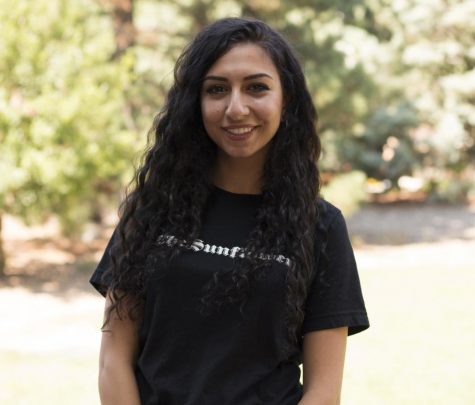
Jenna Farhat was the news editor of The Sunflower. Farhat majored in creative writing.



